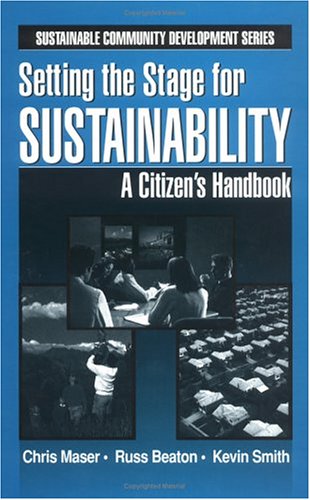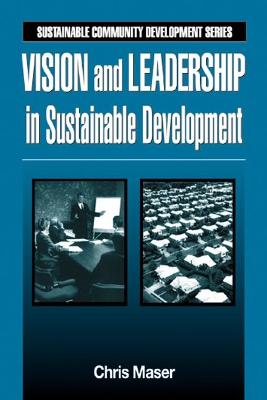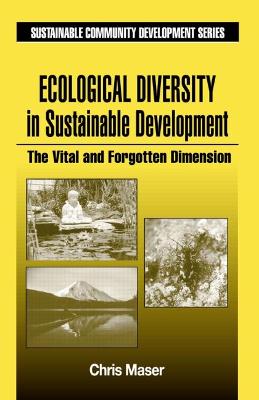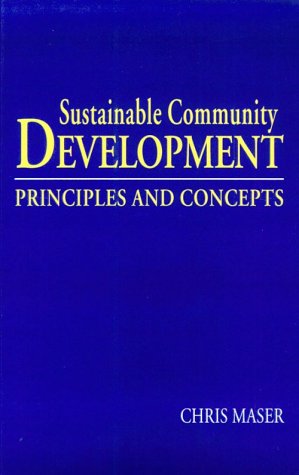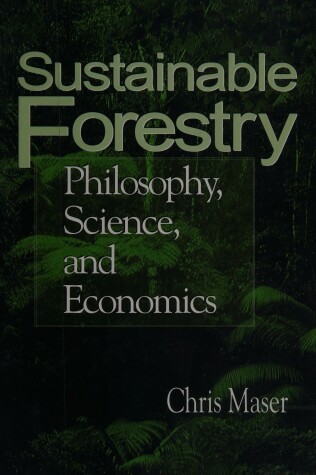Sustainable Community Development
4 primary works • 7 total works
Book 5
Setting the Stage for Sustainabilty
by Chris Maser, Charles R. Beaton, and Kevin M. Smith
This invaluable text looks at resolving environmental conflicts through a "transformative" rather than a "problem-solving" approach. The transformative approach emphasizes the capacity of facilitation for personal growth. The text analyzes good and bad institutionalized social patterns in an ecological sense. The authors believe that through positive thinking and the willingness to take risks, we can become creative forces in our communities and in the world.
Book 6
In his travels as an environmental consultant and lecturer, Chris Maser has seen the dilemma many times: "I have taken part in so-called community visioning processes, in which it was patently clear that the people conducting the process knew nothing about a vision, or how to create one.
"It has been my experience that the vast majority of people cannot lead because they do not know what the inner qualities of leadership are..."
Vision and Leadership in Sustainable Development explores the seldom-considered philosophical basis behind the models and methods of leadership, pointing the way to the essential qualities it takes to establish a shared vision of community life.
Divided into two parts-shared vision and leadership-Maser explores numerous issues and considerations to cultivate well-rounded leadership, and provide a more substantive blueprint for local activism.
As with the previous and forthcoming volumes in the Sustainable Community Development series, Maser recognizes the increasing importance of local communities to take charge of the issues most directly affecting the environment.
Book 7
Reuniting Economy and Ecology in Sustainable Development
by Charles R. Beaton
Reuniting Economy and Ecology in Sustainable Development is part of a series on the various aspects of sustainable development, where "community" focuses on the primacy and quality of relationships among people sharing a particular place and between people and their environment. "Development" means personal and social transformation to a higher level of consciousness and a greater responsibility to be one anothers keepers, and "sustainability" is the act whereby one generation saves options by passing them to the next generation, which saves options by passing them onto the next and so on.
The vision put forth in this book is one of melding ecology and economy into a unifying concept of social-environmental sustainability. The author suggests that dividing ecology and economy conceptually will destroy society as we know it. Our task as adults is to repair the environment for the children who must inherit it.
The link between economics and ecology and the immense potential of that connection to influence the process of change within communities is the focus of this book. The authors theorize that in a healthy, future-oriented community there is a dominant role for sustainability. Each of these four concepts - economics, ecology, community and sustainability - are intimidating on their own. There has been volumes written on each topic separately but very little written on how they are connected in relation to the environment.
Reuniting Economy and Ecology makes those connections and provides a base for finding solutions to achieving sustainable communities.
Book 8
The importance of diversity is overlooked in the social realm, yet decisions made in that realm affect all of society for generations. Planners tend to ignore ecological diversity because they don't understand it. Ecological Diversity in Sustainable Development: The Vital and Forgotten Dimension makes that clear. The author tackles this difficult problem: how are we to maintain sustainable diversity in the Earth's ecosystems and our cultural systems? He provides examples of how natural and cultural diversity have been reduced by altering the linkages between climate, soil, water, air, forests, animals, and people.
The book is divided into three parts. Part one examines diversity as it is found in nature, part two considers how culture affects diversity through its evolution, and part three explores the diversity of Nature as seen through culture in an attempt to guide culture toward social/environmental sustainability.
Anyone who is interested in the quality of life on Earth will want this book. Maser writes in easy-to-read lucid prose, providing a holistic overview of environmental issues that 21st century decision makers must address in shaping our destiny.
1. Wood in streams and rivers is a source of food energy for invertebrate organisms; habitat for vertebrate organisms, such as fish; and a structural component that shapes, diversifies, and stabilizes channels while helping to dissipate the water's energy before it can scour channels.
2. Wood in estuaries is a major source of food and habitat for obligatory, wood boring, marine invertebrates that in their feeding , break it down and pass usable carbon into the water's current where it enters the detrital based marine food web.
3. Wood along the coastline stabilizes sand spits, beaches, and dune complexes, as well as battering rocky shores where it creates new habitats for intertidal organisms and provides small splinters of wood to the coastal food chain.
4. Driftwood floating in the open ocean attracts a variety of marine invertebrates and fishes, forming a floating surface community that help organisms colonize new areas. Large fishes, such as tuna, not only feed on smaller fishes attracted to the wood but also drift with it because its movement is controlled by wind and current; thus tuna find the best feeding areas-current interfaces rich in food species.
5. A common textbook perception on marine biology is that, while communities of bacteria can use sulfur compounds as energy and animals can and do live around deep-sea hydrothermal vents through which hot water issues in the ocean's floor, the rest of the oceans bottom is almost devoid of life. But as driftwood becomes waterlogged and sinks, it represents terrestrially-fixed carbon in the energy poor deep-sea where at least three species of wood-borers convert it into a readily available source of detritus that in turn supports the development of complex communities of bottom-dwelling organisms.
6. The loss of wood to aquatic ecosystems means destabilization of streams, estuaries, dunes and beaches as well as food chains in the oceans of the world. Sooner or later it may mean the loss of jobs and unique cultural ways of life such as the commercial fishing of certain species.
Maser presents a clear picture of sustainable community development for what it truly is-a community-directed process of development that is based on human values, active learning, shared communication and cooperation, within a fluid system, void of quick fixes, integrated learning and work, that becomes a shared societal vision both culturally and environmentally.
Sustainability, in the sense of community development, is the act of one generation saving options by passing them on to the next generation, and so on. This is the main thrust of Maser's book. Readers will see the importance of and the need for shifting personal consciousness from being self-centered to becoming other-centered. This book is perfect for environmentalists, conservationists and those concerned with restoration, concerned business leaders and developers, community and government leaders and policy makers, economists, and academicians.
In this important new book Chris Maser covers the ecological characteristics of forests; asking - what makes up a forest? He discusses the science and technology of forestry and the uncertainties we face in our attempts to manage forests throughout the world.
Sustainable Forestry also deals with current management problems within the forestry profession, beginning with university training and ending with dysfunction in land management agencies. Proposals for change are given, covering in detail what that means, how it's effected and how it's perceived. Important topics such as forest planning, establishing an environmental vision and resolving conflicts are also discussed.
Maser concludes with the possibilities for sustainable forestry into the twenty-first century, specifically discussing adaptive ecosystem management.
